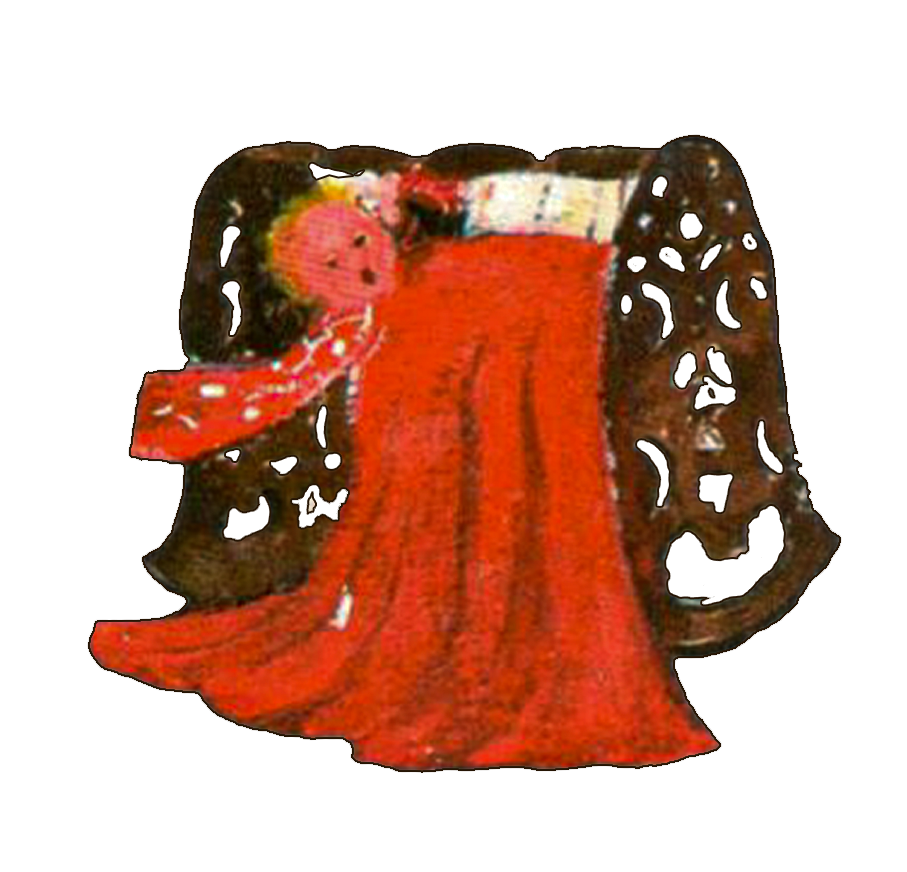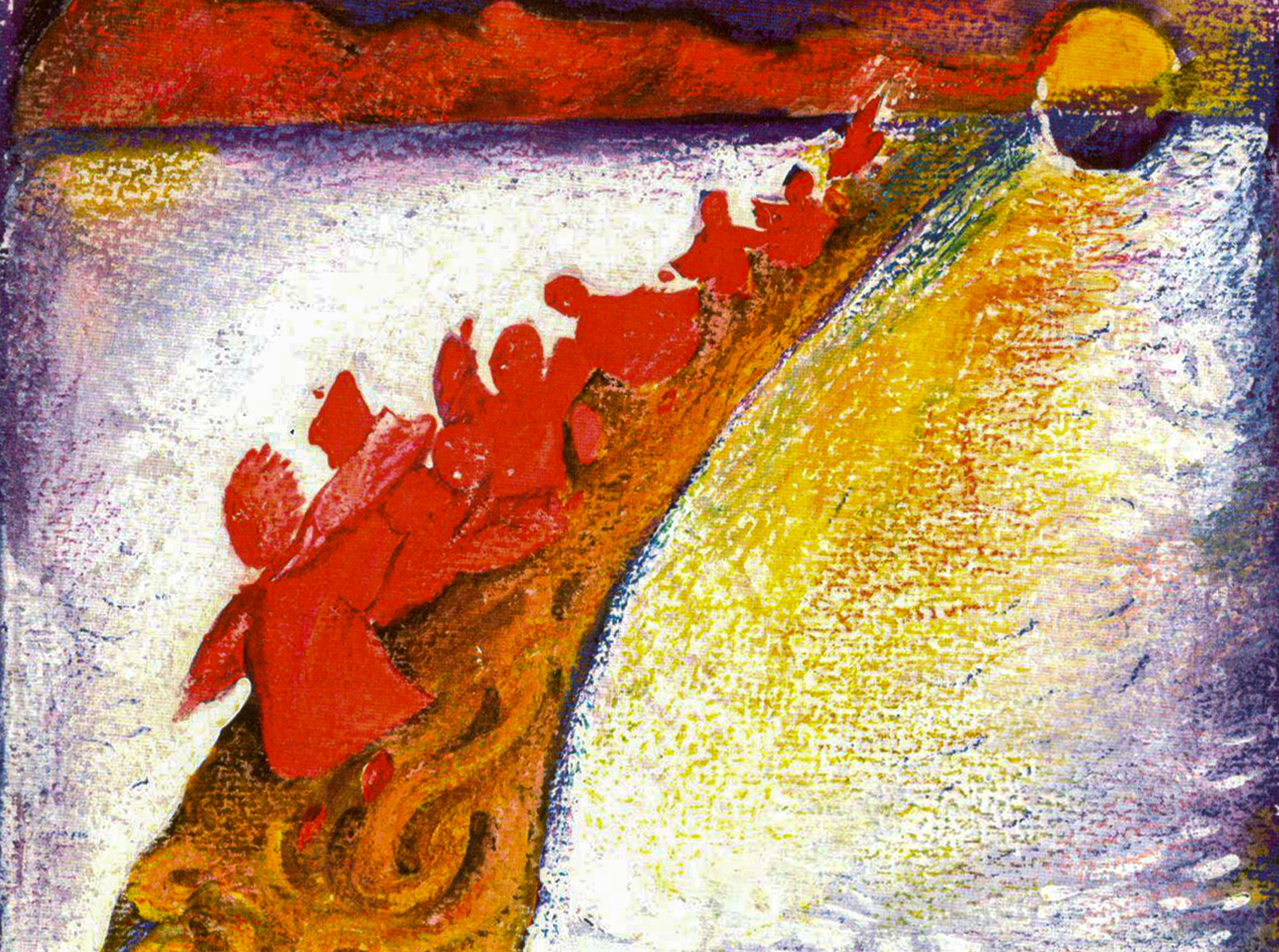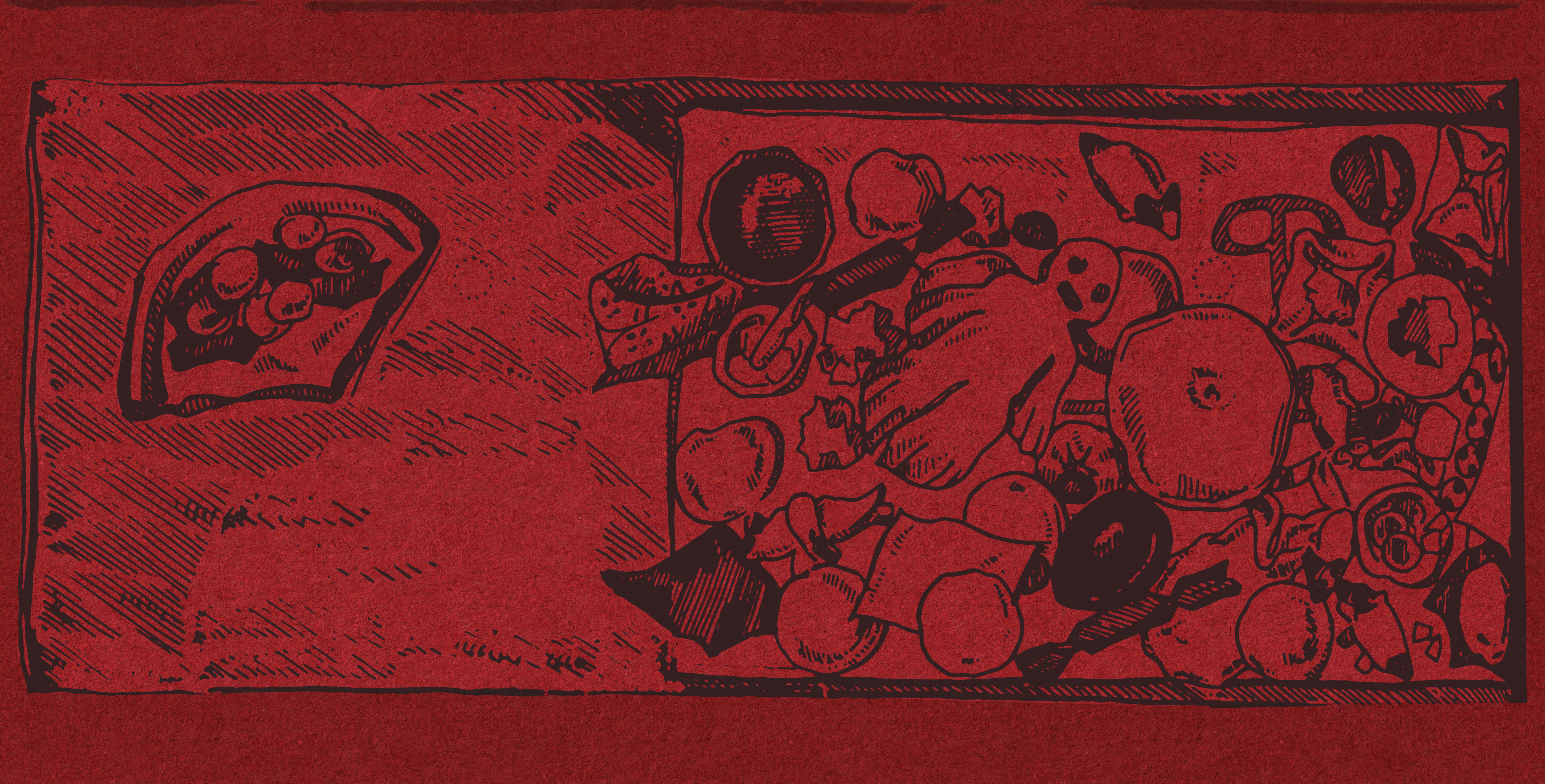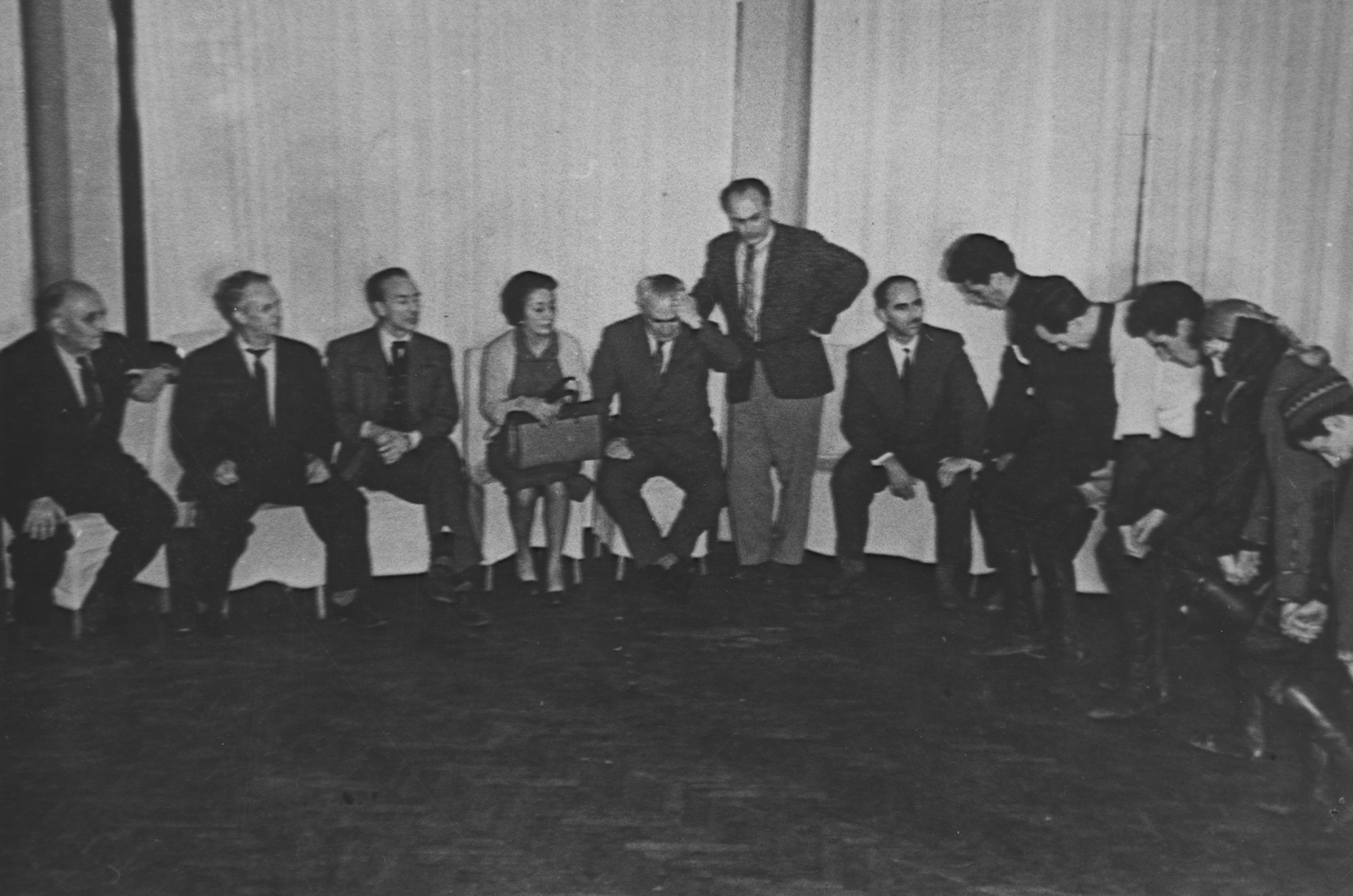Georgian Knowledge of Childhood Infectious Diseases (“Batonebi”) and Their Reflection in Folklore
In Georgian traditional belief, childhood infectious diseases—referred to as batonebi [1](“lords”) — were personified as spiritual beings and known as “angels” (angelozebi) or as “sent by God” (ghvtisgan gamoshobilebi).
According to folk understanding, the batonebi were seven sibling spirits: measles, rubella, chickenpox, whooping cough, smallpox, mumps, and scarlet fever. Their arrival, in the form of illness, often led to serious complications and even death.
It is worth exploring why, in the eyes of our ancestors, these batonebi descended to Earth—and whether their coming was perceived as punishment or as a blessing.[2]
Georgian ethnographic and folklore materials offer insight into these and many related questions.
According to ethnographic sources, the batonebi are said to come from the White Sea:
“We have arrived from the White Sea, Iavnanina,
We are the seven lords — brothers and sisters, Iavnanina.”

Illustration from the book „Mkhiarul-Braziani Batonebi“, Painter – Ketevan Dzidziguri
All diseases are said to dwell beyond the Black Sea, where rivers of honey and streams of milk flow without end. The “rivers of honey” metaphorically represent the rays of the sun, while the “streams of milk” refer to white clouds and mist.[3]
The coming of the batonebi is not linked to any particular season — they may appear in spring, autumn, or even winter; in short, whenever a ray of sunlight pierces through the clouds. The batonebi are believed to travel along that ray of sunshine. It is during warm weather that outbreaks are typically observed.
Since the batonebi are referred to as angels, they are to be regarded as otherworldly beings. This once again affirms the belief in a distinct realm — the domain of the batonebi — situated in the world of sunlight and white clouds.
According to ethnographic sources, in Georgian folk belief and representation, the sun deity is regarded as the ruler of illnesses, including sakhadi[4] — a name that bears resemblance to that of the Sumerian solar deity, Barbale Babar (also rendered as Babar or Babar-Babar). The Sumerian word babar signifies brilliance and light.[5]
The deity who sends the lords (batonebi), Babar, is a fiery and radiant figure associated with the colour red. The arrival of the lords was received with particular reverence, and red was prominently used in their honour.
The Georgian deity Barbare shares similar radiant and luminous characteristics; however, the Georgian and Sumerian deities differ in gender. As noted in Georgian ethnological scholarship, the Georgian solar deity Babar (or Babar-Babar) is understood to be female.[6]
On the other hand, Barbare, who in Georgian folk ethnography is often referred to as the “aunt” (mamida — father’s sister) or “mother” of the lords, is a female deity to whom people pray for the recovery of the sick.[7] It can be assumed that, over time, Babar and Barbare also became functionally and symbolically intertwined in folk representations. In mythology, the “division” of deities by gender or function is a common theme. Accordingly, Babar is portrayed as a masculine, distant, fierce, and powerful deity, whereas Barbare is depicted as a feminine deity, close to the people, merciful and compassionate.
These two deities may represent a synthesis of two aspects of a single archetype — fierce power and mercy — which, in relation to the lords, creates the model of a complete mythological cycle: Babar is the cause and sender of the lords, while Barbare acts as their mediator and healer.
The lords announce their arrival to us in the form of a rash.[8], [9] The rash is a symbol of the fruit of those spiritual virtues instilled in us by the gods, which for some reason have been forgotten. The lords are sent to remind us of love for one another, care, caution, responsibility, and self-sacrifice — their visit is meant to encourage reflection and the remembrance of these virtues.
This is why peace and quiet prevail in the house at this time. Ethnographic sources tell us that loud talking, fighting, gunfire, drunkenness, and similar behaviours are forbidden. If these rules are broken, the lords will be insulted, and the patient’s illness may worsen. Accordingly, the lords are treated with respect and honour.
One Meskhetian text eloquently describes this respect:
Aunt of the Lords, Iavnanina,
Beneath her, we’ll spread the carpet, vardo[10] Nanina,
And not only that, Iavnanina,
On it, we’ll spread an orkhova,[11] vardo Nanina...
I gathered violets, I spread roses, Iavnanina,
Before the Lords, vardo Nanina.[12]
Since the goddess Barbare is credited with healing sakhadi, to make this process tangible, an earthly or corporeal incarnation of the deity is brought to the patient — a woman who can best sing, speak sweetly, and create a positive atmosphere. Such a woman is called mebodishe (one who asks forgiveness), makhvetseli (one who supplicates), gamomlotsveli (one who performs incantations), and is sometimes also referred to as the “aunt of the lords.” Although people do not see her as a direct embodiment of the goddess Barbare, the very name “aunt of the lords” suggests that such a connection existed in the distant past.
The goddess Barbare sometimes appears as the aunt (father’s sister) of the lords, and sometimes simply as a mother. In both cases, she is a female deity who can heal the sick and is often prayed to for this purpose.
In some versions of the song for the batonebi “Iavnana,”[13] sakhadi is referred to as “divine sickness” or “divine disease.”[14] In Pshav-Khevsureti, it was called “duty to God” or “debt owed to God,”[15] meaning something every human must endure. It was not considered a disease, but rather a visit from the deities, who were to be welcomed as honoured guests.

Illustration from the book „Mkhiarul-Braziani Batonebi“, Painter – Ketevan Dzidziguri
The lords entered the human body and announced their presence with a rash — described metaphorically as a flower. Anyone whom the lords did not visit was considered “unwanted” by the deities. People used to say, “The angels did not settle/rest on him/her; they did not like him/her.”
However, despite the seemingly festive mood, the arrival of the lords sometimes caused fear, as their visit could end tragically for the sick. In the Psalms we read: “O Lord, rebuke me not in Thy wrath” (Psalm 38:1, Georgian Bible; equivalent to Psalm 37:1 in most English translations). According to this understanding, the visit of the lords is perceived as a form of tempering of the human soul — a divine mechanism sent by God that leads a person to contemplation, repentance, and spiritual transformation. Otherwise, illness is accompanied by God’s wrath and may result in a tragic outcome. People protect themselves against this wrath and tragic fate by offering apologies. This is why the woman specifically invited to care for the sick was called a mebodishe (one who asks forgiveness). If we disobey, we are punished. The most precious thing is taken from us — the health or even the life of the child, the fruit of our flesh. At such times, a person has many questions, and understanding this process makes them reflect and seek the cause within themselves. The answer is clear: I failed to care for him properly.
At the same time, the lords are also merciful. Once they recognise kindness from people, they respond with mercy by visiting. During this time, peace, mutual care, attentiveness, and steadfastness in adversity settle over the household. This is a sign that the lords’ visit has fulfilled its purpose. The atmosphere in the home becomes so bright, pure, and serene that even after the lords have departed, they long for it and linger in spirit.[16]
An echo of this understanding of the lords can be heard in one of the popular songs of our time:
Whatever I wished for came true so quickly,
As if everyone had grown wings for me…
I wish the batonebi would truly come to me,
And nightingales like you would sing for me.[17]
This mood — this reverent attitude that we Georgians have had, and still have, towards the lords — seems to echo a distant past. It is rooted in an ancient epoch when, according to Georgian cosmology, all visible and invisible things were believed to be under divine governance; when joy and sorrow, happiness and trial — including illness — each had their presiding or ruling deity.
The Georgian person of that time understood the fruits of the soul, was capable of self-sacrifice for the sake of others, and grasped the value of saving or protecting another. This spiritual understanding is also evident in the Georgian folk tale Tsikara: it is the idea of unconditional love. The ritual of apologising to the lords (batonebi) is, on the one hand, an expression of that unconditional love for the sick person, and on the other, a sign of fear of God and utter obedience.[18]
(Photo N2)
If the patient’s condition becomes critical, the caregiver — usually the mother — is prepared to offer herself in place of her dying child. As an initial act, she may sacrifice a sheep or a rooster at a shrine as a substitute. If this proves ineffective, she takes the child, dressed in white, to the shrine. There, she “ploughs” the earth with her chest — symbolising her willingness to go into the ground in the child’s stead. The white clothing signifies closeness to the spiritual realm.
Before returning home, the sick child is undressed and left at the shrine as a final act of surrender. The mother has offered herself in exchange and pleaded for mercy. The deity known as Great Mother Nana is the one who receives the deceased into the earth and returns them to her embrace. Nana, the Georgian goddess embodying the maternal forces of nature, governs fertility as well as the death and rebirth of nature. She is the nurturer of life. Just as fruit grows from a seed, she brings forth life. If Great Mother Nana is the divine mother, then the biological mother is understood as the “Little Mother.” For this reason, in ancient times it was customary to bury the dead in a foetal position, inside clay jars: the deceased was being returned to the womb of Great Mother Nana.
This belief also explains why sleeping is referred to as iavnana and why people prayed to Mother Nana to grant the child peaceful rest and allow them to stay with her temporarily. In the case of death, they asked her to keep the child with her forever. Just as we bid farewell to the deceased in the afterlife with flowers, so too do Georgians escort the lords (batonebi) to Mother Nana.
Based on the above, the arrival of the lords was considered a special spiritual event that played an important role in the spiritual development of both the child and their caregiver. After their arrival, a person would never be the same as before. This ancient form of communication with the spiritual world, embodied in the tradition of welcoming and sending off the lords, was preserved by Georgians almost until recent times.
[1]Batonebi — the common folk term for contagious childhood diseases.
[2]The batonebi are discussed from this perspective in Gia Razmadze’s article, “‘Bat’onebis Nanina’: Traces of the Merciful Era in Georgian Song,” which you can find in issue No. 2 of our magazine Georgian Folklore.
[3]According to one of the Megrelian legends, a fisherman was carried away across the sea by a large fish that bit his hook. He ended up in the realm of the batonebi, where “rivers of honey and streams of milk flowed…” (Sakhokia, Tedo. 1956. Ethnographic Writings (ეთნოგრაფიული ნაწერები). Tbilisi: Scientific-Methodological Cabinet Publishing. pp. 23–40).
[4]Sakhadi – an infectious disease (such as measles, smallpox, whooping cough, etc.) that, once contracted, typically does not recur.
[5]Giorgadze, Grigol. 2002. Ancient Near Eastern Ethnic Groups and the Origin of the Georgians (უძველესი ახლოაღმოსავლური ეთნოსები და ქართველთა წარმომავლობა). Tbilisi: Sulkhan-Saba Orbeliani University Press. p. 23.
[6]Bardavelidze, Vera. 2006. From the History of the Ancient Religion of the Georgians: The Deity Barbar-Babar (ქართველთა უძველესი სარწმუნოების ისტორიიდან: ღვთაება ბარბარ-ბაბარ). Tbilisi: Caucasian House. p. 52.
[7]Ibid., pp. 55, 57
[8]Mindadze, Nunu. 1979. “Customs and Beliefs Related to Childhood Infectious Diseases in Pshav-Khevsureti.” (ბავშვთა ინფექციურ დაავადებებთან დაკავშირებული წეს-ჩვეულებები და რწმენა-წარმოდგენები ფშავ-ხევსურეთში). Materials for the Ethnography of Georgia, vol. 20. Tbilisi: Metsniereba. pp. 122–128.
[9]In Georgian, it is called “kvavili” (ყვავილი), which literally means “flower.”
[10]Ia and vardi mean violet and rose, respectively. These flowers were traditionally used in the batonebi ritual, and the words commonly appear in batonebi healing songs.
[11]Orkhova — a woven carpet with a textured surface, featuring a double-sided weave.
[12]Georgian Folklore. 2003. Edited by Naira Gelashvili. Tbilisi: Caucasian House. p. 40.
[13]In eastern Georgia, the song intended for the batonebi is called iavnana, while in western Georgia it is known as batonebi or sabodisho (song of apology).
[14] A sacred illness believed to be a visit from the gods, not an ordinary sickness.
[15] A burden believed to be assigned by divine will; something every person must accept and carry.
[16]Razmadze, Gia. 2022. “‘Bat’onebis Nanina’: Traces of the Merciful Era in Georgian Song,” Georgian Folklore, no. 2.
[17]Lyrics by Bichiko Svanidze; music by Temur Khujadze.
[18] Razmadze, Gia. 2022. “‘Bat’onebis Nanina’: Traces of the Merciful Era in Georgian Song,” Georgian Folklore, no. 2.


.jpg)

